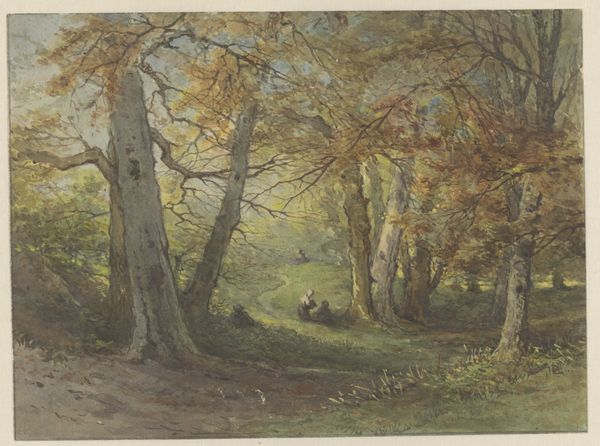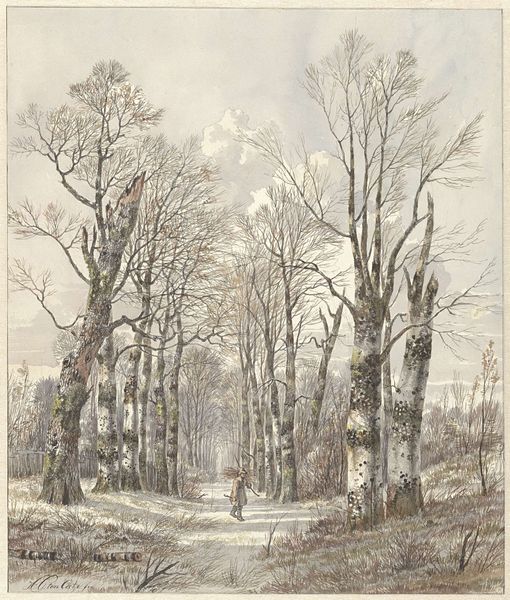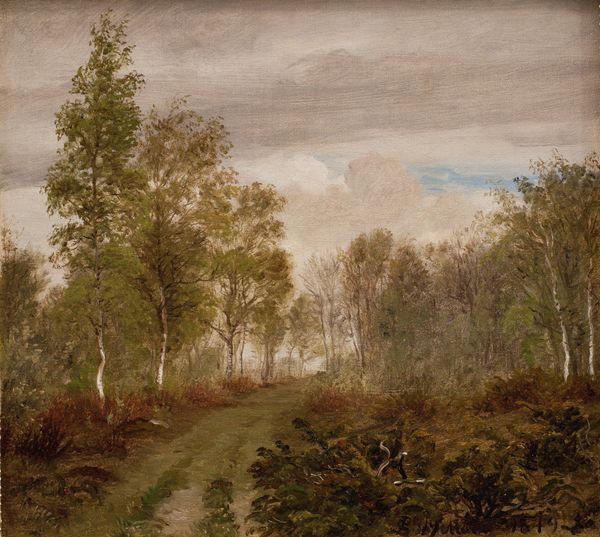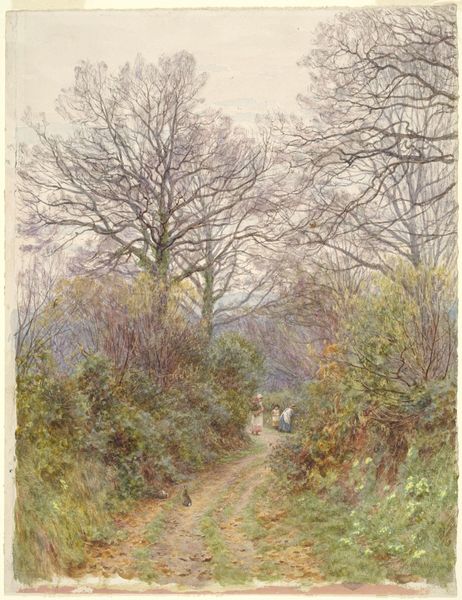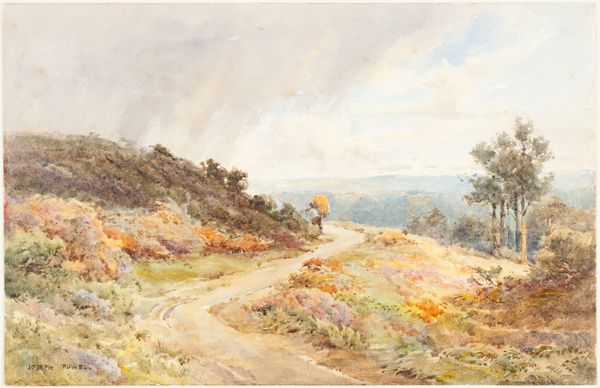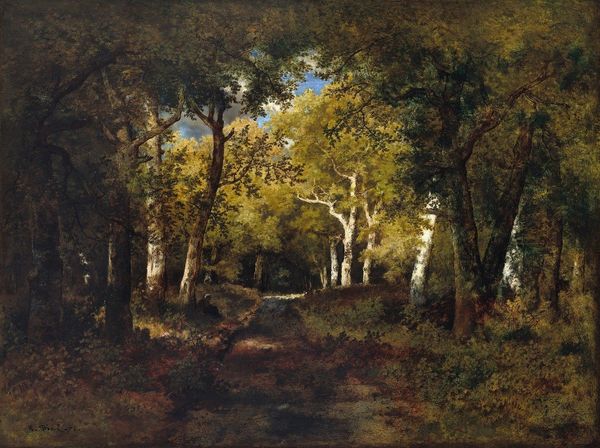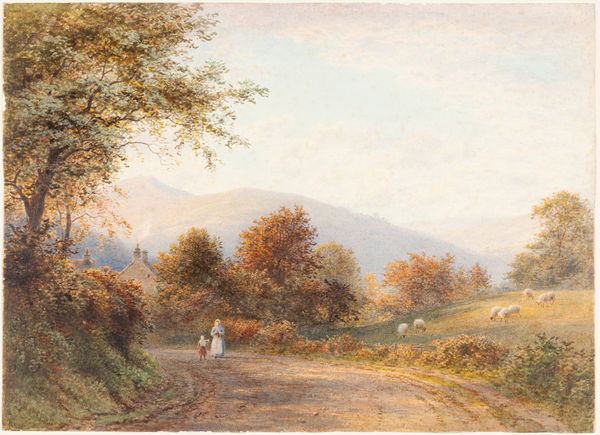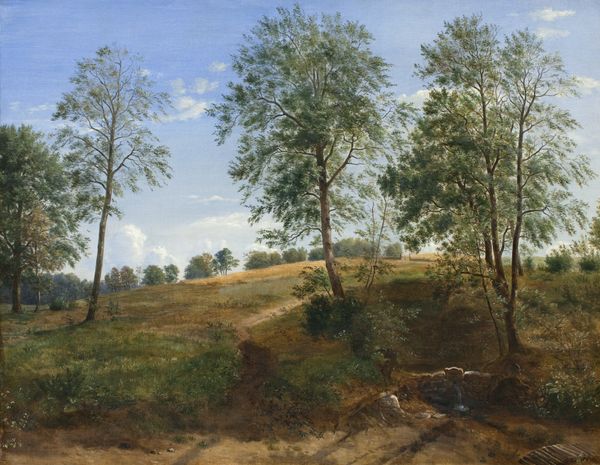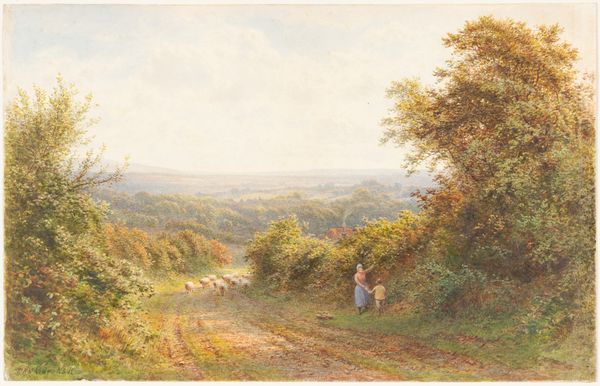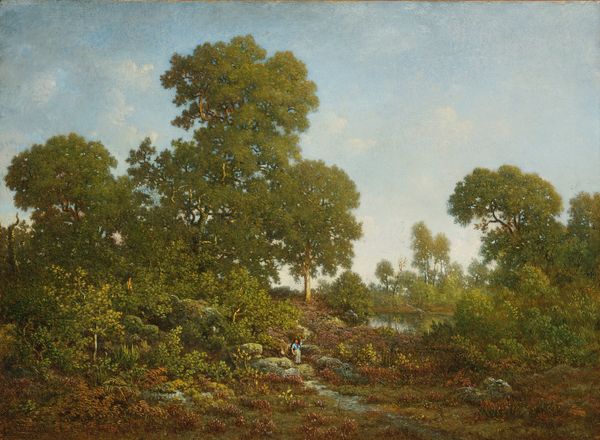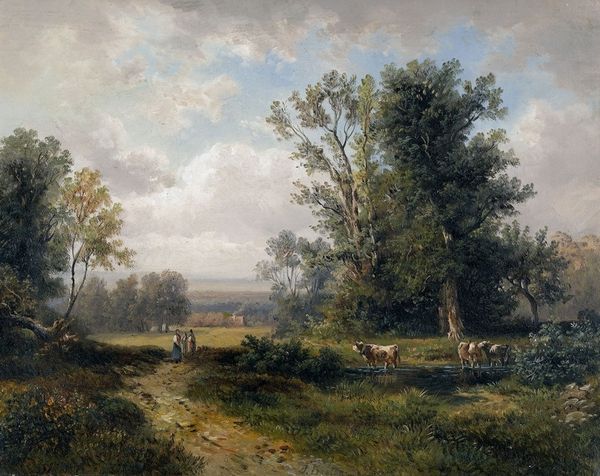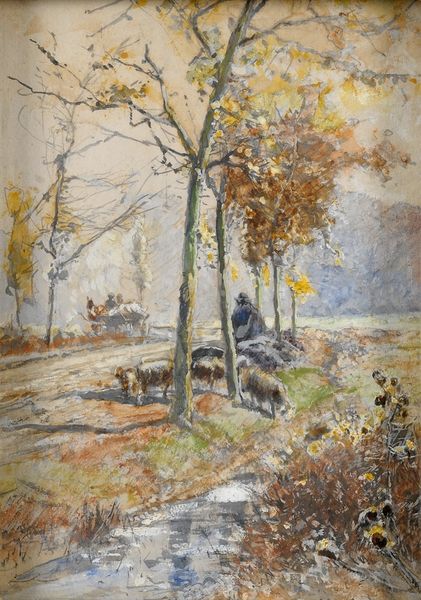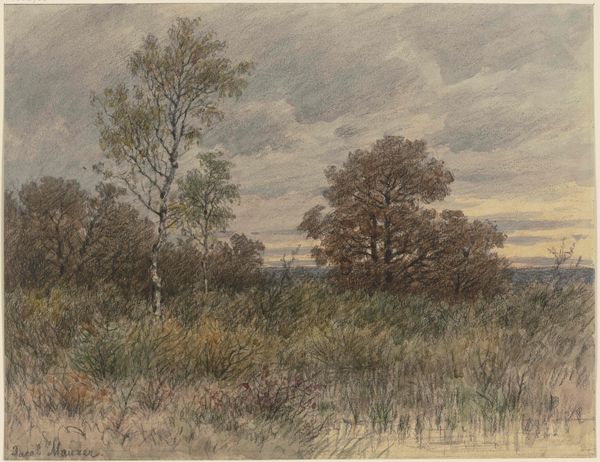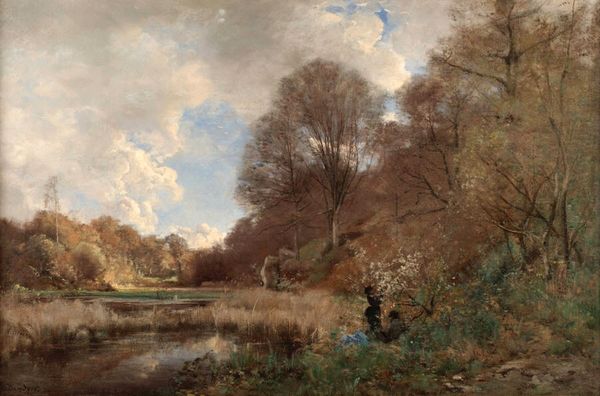
Dimensions: sheet: 56 × 77.7 cm (22 1/16 × 30 9/16 in.)
Copyright: National Gallery of Art: CC0 1.0
Curator: Standing here, we’re looking at Auguste Allongé’s “Autumn Landscape in the Forest of Fontainebleau,” circa 1860. It's rendered in watercolor and drawing. Editor: There’s such quietude here, even desolation. It's achieved by the layering of those soft watercolor washes that really capture that misty, muted light of late autumn. Curator: Fontainebleau was, of course, a critical site for landscape painters throughout the 19th century, and Allongé was certainly contributing to a trend of relocating artistic production to represent more authentic, regional scenery away from Paris. This trend emerged with artists eager to depict familiar places, steering away from strict allegorical interpretations. Editor: Note the careful balance, the foreground's detailed, earthy tones anchored against the more ethereal blues and grays of the sky. The eye is led up, almost reverentially, by the skeletal branches. They are almost reaching. The composition really does reinforce the period’s artistic conventions, mirroring a Romantic ideal, I believe. Curator: I'd agree there's Romanticism, yes, but also I'd argue it moves into more modern representations in that this captures that bourgeoise relationship with leisure travel in which natural locations were newly conceived as a reprieve and a chance to momentarily retreat from an industrializing environment. Editor: Do you see, also, how the muted palette draws us in? A vibrant, loud painting would command our attention, but here, we're invited into a slow, deliberate viewing process as if our eyes themselves become the traveler. Curator: Precisely. This also fits into larger socio-political narratives related to access. Locations that became part of landscape painting, places like Fontainebleau, are often connected to changing forms of tourism in which new railway systems began democratizing what regions and sites people could actually access. Art could reflect who got to see what and where, during this period. Editor: Ultimately, this artwork presents a compelling, quiet conversation. Allonge is demonstrating mastery of tone and the way it renders both visual space and atmosphere. Curator: Indeed, a seemingly simple painting contains many intricate elements tied to social shifts and aesthetic traditions of the mid-19th century.
Comments
No comments
Be the first to comment and join the conversation on the ultimate creative platform.
